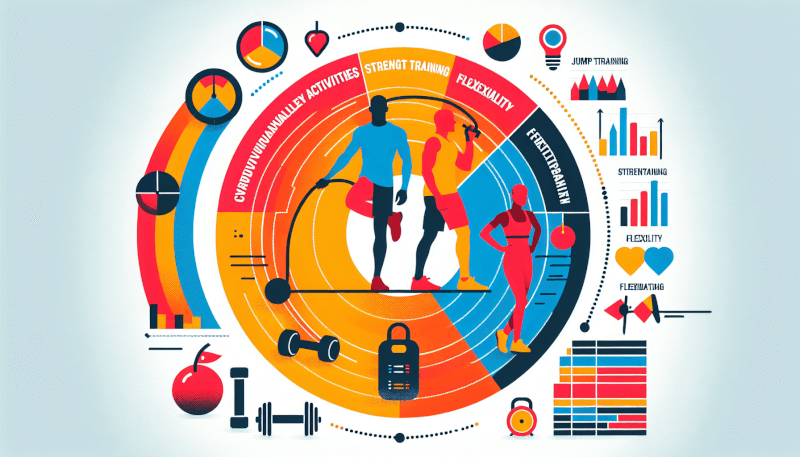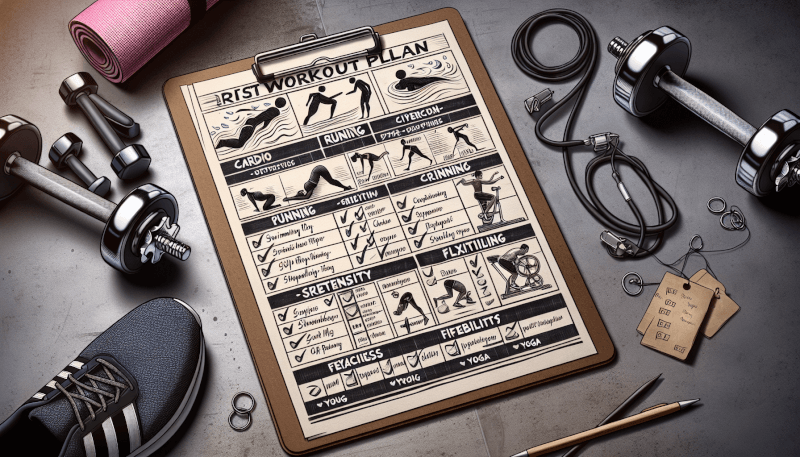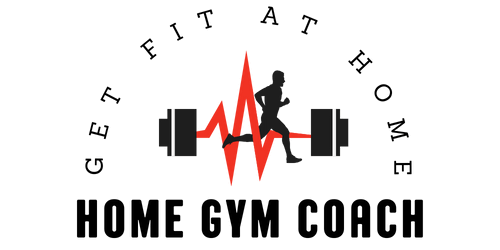Whether you’re a fitness newbie or a seasoned gym-goer, finding the right workout plan that aligns with your fitness goals can be a daunting task. With countless options available, it’s easy to feel overwhelmed and unsure of where to start. But fear not, because custom workout plans are here to save the day! These personalized plans take into consideration your specific goals, body type, and fitness level, creating a tailor-made routine that will help you achieve optimal results. Say goodbye to cookie-cutter workouts and hello to a program that’s designed just for you. So buckle up and get ready to discover the perfect balance for your fitness goals with custom workout plans.

Understanding Your Fitness Goals
Defining Your Fitness Goals
Before embarking on a workout journey, it’s crucial to define your fitness goals. Take some time to ponder about what you want to achieve through exercise. Do you want to lose weight, build muscle, increase endurance, or improve overall fitness? Clearly defining your goals will provide you with a roadmap to success.
Setting Realistic Goals
While it’s great to aim high, setting realistic goals is essential to maintain motivation and avoid disappointment. Assess your current fitness level and consider your limitations. It’s important to push yourself, but also be aware of what is achievable in a given timeframe. By setting realistic goals, you can track your progress and feel accomplished along the way.
Considering Personal Limitations
Understanding your limitations is crucial for your workout plan’s success. Factors such as age, medical conditions, and physical restrictions should be taken into account when designing your fitness routine. Don’t be discouraged if you need to modify certain exercises or start at a lower intensity. Your workout plan should be tailored to your individual needs and capabilities.
Assessing Your Current Fitness Level
Evaluating Strength and Endurance
Assessing your strength and endurance is the first step in designing an effective workout plan. This can be done through various exercises like push-ups, planks, or squats to evaluate your upper body, core, and lower body strength. Endurance can be measured by timing how long you can run, cycle, or perform high-intensity exercises. This assessment will help determine where you currently stand and where you want to improve.
Measuring Body Composition
Understanding your body composition is essential for creating a workout plan that aligns with your goals. By measuring your body fat percentage, muscle mass, and overall weight, you can get a more accurate picture of your progress. This can be done through tools like body fat calipers, bioelectrical impedance scales, or DEXA scans. It’s important to remember that body composition is just one aspect of overall fitness, and improvements may not always be reflected on the scale.
Determining Flexibility and Mobility
Flexibility and mobility play a significant role in preventing injuries and enhancing overall fitness. Assessing your flexibility can be as simple as performing basic stretches and observing your range of motion. Mobility can be evaluated through exercises that test your joint strength and function. Identifying areas of improvement will help you incorporate the appropriate exercises into your workout plan.
Choosing the Right Workout Types
Cardiovascular Exercises
Cardiovascular exercises are crucial for improving heart health, burning calories, and increasing endurance. Running, cycling, swimming, and aerobics are popular cardiovascular activities. It’s important to choose exercises that you enjoy and can sustain for a reasonable amount of time. Aim for at least 150 minutes of moderate-intensity cardiovascular exercise per week.
Strength Training
Strength training is essential for building muscle, improving bone density, and boosting metabolism. It involves using resistance to challenge your muscles, such as lifting weights or using resistance bands. Design a strength training routine that targets all major muscle groups and gradually increases in intensity over time. Aim for two to three strength training sessions per week.
Flexibility and Mobility Training
Flexibility and mobility training are often overlooked but are crucial for maintaining joint health and preventing injuries. Incorporate stretching exercises, yoga, and Pilates into your routine to improve both flexibility and mobility. Focus on static and dynamic stretches that target major muscle groups. Aim to stretch for at least 10-15 minutes after every workout.
Functional Training
Functional training focuses on improving movement patterns and preparing your body for real-life activities. It involves exercises that mimic everyday movements, such as squats, lunges, and planks. Incorporate functional training exercises into your routine to enhance overall strength and stability.
High-Intensity Interval Training (HIIT)
HIIT is a time-efficient workout style that alternates between short bursts of intense exercise and active recovery. It combines cardiovascular and strength training elements, pushing you to your limits. Incorporate HIIT workouts into your routine for an extra calorie burn and a boost to your cardiovascular fitness.
CrossFit and Circuit Training
CrossFit and circuit training are popular workout styles that involve high-intensity exercises performed in a structured sequence. These workouts focus on strength, cardio, and endurance. They can be done in a group setting or individually, depending on your preferences. Incorporate CrossFit or circuit training workouts into your routine for a challenging and diverse exercise experience.
Group Fitness Classes
Group fitness classes offer a motivating and supportive environment to achieve your fitness goals. From Zumba and spin classes to kickboxing and yoga, there are various options to choose from. Find a class that interests you and fits into your schedule. Group fitness classes provide a fun and social workout experience while keeping you accountable.
Designing Your Custom Workout Plan
Understanding the Principles of Training
In order to design an effective workout plan, it’s important to understand the principles of training. These principles include specificity, overload, progression, and individuality. Tailor your workouts to your goals, challenge your body by increasing intensity or duration gradually, and consider your own unique capabilities and needs.
Setting Weekly Exercise Frequency
Determining how often you should exercise depends on your goals and availability. Aim for at least three to five workouts per week, including a mix of cardiovascular, strength, and flexibility training. Be consistent with your exercise routine to achieve optimal results.
Determining Duration and Intensity
The duration and intensity of your workouts will depend on your fitness level and goals. Cardiovascular exercises should generally last for at least 30 minutes, gradually increasing to 60 minutes for more advanced individuals. Strength training sessions should focus on performing exercises with proper form and challenging weights. Incorporate interval training to enhance intensity and burn more calories.
Selecting Appropriate Exercises
Choose exercise variations that align with your goals and cater to your personal preferences. For cardiovascular exercises, consider activities like swimming, running, or cycling. For strength training, select exercises that target specific muscle groups and allow for proper progression. Experiment with different exercise combinations to keep your workouts engaging and effective.
Structuring Warm-up and Cool-down
A proper warm-up and cool-down are essential for injury prevention and optimal workout performance. Prior to your workout, engage in 5-10 minutes of light aerobic activity to increase blood flow and warm up your muscles. After your workout, incorporate static stretching and foam rolling to cool down and aid in muscle recovery.
Incorporating Progression and Variation
To continuously challenge your body and prevent plateaus, it’s important to incorporate progression and variation into your workouts. Increase the intensity, duration, or weights gradually as your fitness level improves. Introduce new exercises and training techniques to keep your workouts fresh and exciting.
Balancing Workout Volume and Recovery
Finding the right balance between workout volume and recovery is crucial for avoiding overtraining and promoting muscle growth. Listen to your body and give yourself adequate rest days between intense workouts. Incorporate low-impact activities or active recovery days to promote blood flow and ease muscle soreness. Pay attention to your body’s signals and adjust your workout plan accordingly.

Considering Time Constraints and Schedule
Identifying Available Time Slots
Consider your daily schedule and identify available time slots for workouts. Whether it’s early morning, lunch break, or evening, find a time that works consistently for you. It’s important to prioritize exercise and treat it as an essential part of your routine.
Fitting Workouts into Daily Routine
Incorporate exercise seamlessly into your daily routine to ensure consistency. For example, consider biking or walking to work instead of driving, or taking the stairs instead of the elevator. Small changes like these can add up and provide additional opportunities for physical activity.
Creating Realistic Time Blocks
Allocate realistic time blocks for your workouts based on your available schedule. If you have limited time, opt for high-intensity workouts or circuit training. If you have more flexibility, you can engage in longer sessions or split your workouts into shorter bouts throughout the day. Be mindful of not overcommitting or overwhelming yourself with unrealistic time blocks.
Utilizing Workouts for Stress Management
Exercise is a powerful tool for managing stress and improving overall well-being. Incorporate workouts into your schedule as a means of relieving stress and boosting your mood. Whether it’s a yoga session, a brisk walk, or a kickboxing class, find activities that help you unwind and release tension.
Addressing Individual Preferences and Interests
Exploring Different Workout Styles
There is a wide variety of workout styles available, so don’t be afraid to explore different options. From traditional gym workouts to outdoor activities, martial arts, or dancing, find activities that resonate with your interests and keep you motivated.
Incorporating Activities You Enjoy
Incorporating activities you genuinely enjoy is key to maintaining long-term commitment to your workout plan. If you love swimming, make it a regular part of your routine. If you enjoy hiking, set aside time for outdoor adventures. By incorporating activities you enjoy, exercise becomes something you look forward to rather than a chore.
Adapting to Different Environments
Don’t let changing environments deter you from sticking to your fitness routine. Whether you’re traveling for work or on vacation, adapt your workouts to the resources available. Utilize hotel gyms, explore local fitness facilities, or engage in outdoor activities specific to the area. Stay flexible and find ways to incorporate exercise into any environment.
Finding Accountability Partners or Trainers
Working out with a friend, joining a fitness group, or hiring a personal trainer can provide accountability and support. Having someone to share your fitness journey with increases motivation and makes workouts more enjoyable. Consider finding an accountability partner or seeking professional guidance to stay on track and achieve your goals.

Balancing Cardiovascular and Strength Training
Determining Optimal Cardio Frequency
The frequency of cardiovascular exercise is dependent on individual goals and preferences. Aim for at least three to five cardiovascular sessions per week, with a mix of moderate-intensity and high-intensity workouts. Consult with a fitness professional to determine the optimal frequency based on your fitness level and goals.
Incorporating Cardio into Strength Training
To balance cardiovascular and strength training, incorporate cardio exercises as part of your warm-up or cool-down during strength training sessions. For example, perform jumping jacks, high knees, or burpees between sets of strength exercises. This allows you to reap the benefits of both types of workouts within a single session.
Adjusting Cardio and Strength Focus Based on Goals
The balance between cardio and strength training should be adjusted based on individual goals. If your primary objective is weight loss, focus more on cardiovascular exercises. If you want to build muscle and increase strength, prioritize strength training with cardio as a complement. Experiment with different ratios and listen to your body to find the optimal balance for your specific goals.
Monitoring and Tracking Progress
Using Technology and Fitness Apps
Technology and fitness apps can be valuable tools for tracking your progress. There are numerous apps available that can help you monitor your workouts, track your nutrition, and measure your progress over time. Utilize these resources to stay accountable and motivated throughout your fitness journey.
Tracking Weight and Body Measurements
Tracking your weight and body measurements can provide insights into your progress, but it’s important to remember that they are not the sole indicators of fitness. Take regular measurements and weigh-ins to see changes in your body composition over time. However, focus more on how you feel, your energy levels, and your overall performance during workouts.
Recording Workout Performance
Keep a record of your workout performance to track your progress and identify areas of improvement. This can be as simple as using a notebook or a fitness app to log the exercises, sets, reps, and weights used. By monitoring your progress, you’ll be able to celebrate small victories and stay motivated.
Assessing Strength and Endurance Improvements
Regularly reassess your strength and endurance to gauge your progress. Repeat the initial assessments you performed when assessing your current fitness level. Measure improvements in the number of push-ups or weight lifted, and observe changes in your endurance during cardio exercises. These assessments will provide concrete evidence of your improvement and keep you motivated to push further.

Adapting Your Plan over Time
Reassessing Goals and Objectives
As you make progress, it’s important to periodically reassess your goals and objectives. What seemed challenging in the past may become achievable, and new goals may emerge. Take the time to reflect on your progress, celebrate your achievements, and set new goals that continue to push you forward.
Modifying Workout Intensity and Volume
Your workout plan should evolve as your fitness level improves. Gradually increase the intensity or volume of your workouts to continually challenge your body. Add extra sets, increase weights, or incorporate more advanced exercises to keep your workouts effective and engaging.
Incorporating New Exercises and Techniques
Introduce new exercises and techniques into your workout routine to prevent boredom and promote continual progress. Explore different workout styles, experiment with new equipment, or try out innovative training methods. Keeping your workouts fresh and exciting will help you stay motivated and engaged.
Challenging Plateaus and Boredom
Everyone experiences plateaus and moments of boredom with their workout routine. When this happens, it’s important to challenge yourself and break through the stagnation. Increase the intensity, try new exercise variations, or seek guidance from a fitness professional to overcome plateaus and rediscover your motivation.
Considering Professional Guidance
Seeking Advice from Certified Trainers
Certified trainers are a valuable resource for achieving your fitness goals. They possess the knowledge and expertise to design a personalized workout plan that aligns with your objectives. Seek guidance from a certified trainer to ensure that you are performing exercises correctly, progressing safely, and optimizing your training.
Working with Certified Fitness Coaches
Fitness coaches can provide ongoing support and motivation throughout your fitness journey. They can help you set realistic goals, keep you accountable, and provide guidance on nutrition and lifestyle choices. Consider working with a certified fitness coach to enhance your overall experience and maximize your results.
Consulting with Nutritionists or Dietitians
Nutrition plays a crucial role in achieving your fitness goals. Consulting with a nutritionist or dietitian can help you optimize your diet and fuel your body for optimal performance. They can provide personalized recommendations based on your goals, preferences, and dietary restrictions.
Understanding the Importance of Expertise
While it’s possible to design your own workout plan, seeking professional guidance ensures that you are on the right track. Experts can help you navigate through obstacles, minimize the risk of injury, and provide valuable insights that would otherwise be missed. Recognize the importance of expertise and leverage it to achieve the best possible results.



